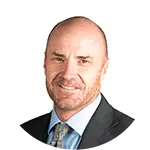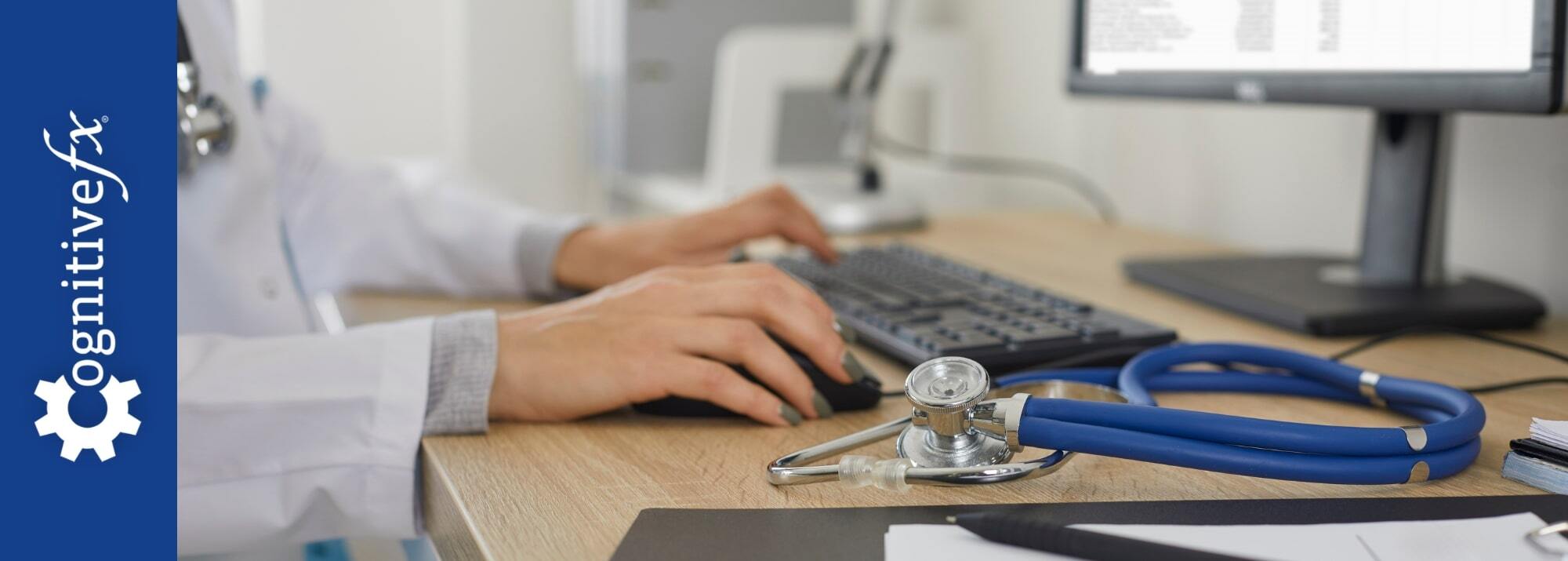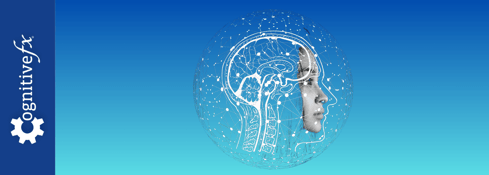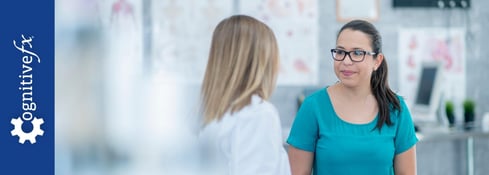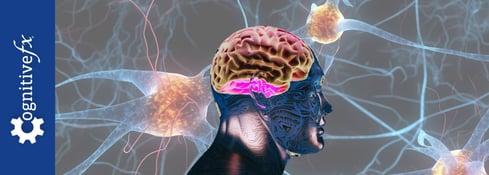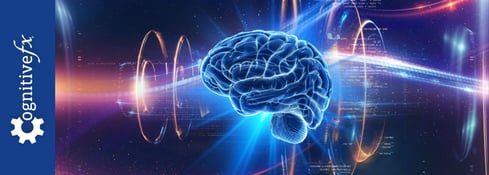Intermittent theta burst stimulation (iTBS) has been growing in popularity since receiving FDA approval for treating major depression in 2018. This new brain stimulation method uses a series of short, high-frequency magnetic pulses that can be delivered in just a few minutes per session instead of the 40-minute session required for conventional TMS.
In addition, because iTBS sessions can be delivered in a fraction of the time, it's being used to provide accelerated TMS protocols. Patients can complete a treatment course in just five days instead of the conventional TMS protocol of daily sessions, five days per week for four to six weeks.
In this article, we’ll go over the most important aspects of Theta Burst Stimulation to help you decide if it’s the right treatment option for you.
Our clinic, based in Provo, Utah, offers accelerated fMRI-guided TBS (the most precise and effective form of theta burst TMS) for treatment-resistant depression. Take our quiz to see if you’re a good fit for our accelerated treatment protocol.
What Is Theta Burst Stimulation (TBS)? How Is It Different From Conventional TMS?
Theta Burst Stimulation (TBS) is a faster and more advanced form of transcranial magnetic stimulation (TMS), a treatment that uses magnetic pulses to stimulate an area of the brain called the left dorsolateral prefrontal cortex (L-DLPFC), which can help reduce symptoms of depression.
Traditional TMS (repetitive transcranial magnetic stimulation) has been used for years and typically takes about 40 minutes per session. TBS is a newer approach that delivers a different type of stimulation in a more natural rhythm—similar to how your brain works when you’re relaxed, daydreaming, or learning something new.
One type of TBS treatment, called intermittent TBS (iTBS), takes just 3 minutes per session. Despite the shorter treatment time, research suggests it may work even better for some people than rTMS treatment.
It's believed that TBS induces changes in neuroplasticity, helping the brain become more flexible and able to form new connections—something that’s often disrupted in people with depression. While we don’t fully understand exactly how it works, studies show it can be highly effective, and the shorter sessions make it easier to fit treatment into daily life. Some clinics also offer accelerated TBS, where patients can receive multiple sessions in a single day to speed up recovery (more on this below).
Is Theta Burst Stimulation FDA-Approved?
In 2018, the U.S. Food and Drug Administration cleared intermittent theta burst stimulation (iTBS) delivered to the left DLPFC for the treatment of major depressive disorder (MDD) in adults.
The approval of theta burst TMS was granted following the positive results obtained on the THREE-D trial. This large-scale trial compared the efficacy and patient experience with iTBS and rTMS and included 414 participants diagnosed with major depressive disorder (MDD). Results showed that 50% of participants treated with iTBS experienced improvements in their depressive symptoms, and 33% achieved remission. This option was found to be at least as effective and safe as repetitive TMS, with the advantage that it can be delivered in less than 5 minutes.
Is Theta Burst Stimulation More Effective Than Conventional TMS?
Research shows that intermittent Theta Burst Stimulation (iTBS) works just as well—or even better—than regular TMS for treating depression. About half of patients see meaningful improvements in their symptoms, and some report a faster drop in suicidal thoughts with iTBS, making it a promising option for those in crisis.
The results can be even more impressive when iTBS is combined with advanced brain imaging to guide treatment. A team at Stanford developed a version of iTBS called the SAINT™ protocol, which uses neuroimaging to precisely locate the part of the brain targeted in TMS treatment.
Instead of manually measuring a patient's head to place the magnetic coil—which fails to account for variations in head size, shape, and individual brain structure and can significantly reduce the treatment’s effectiveness—doctors can pinpoint the exact right spot for each person, leading to better outcomes.
SAINT™ delivers 10 short treatments a day for 5 days—a total of 50 sessions. In a double-blind randomized controlled clinical trial, nearly 86% of patients improved, and about 79% went into remission, even though all of them had previously tried and failed other treatments. One month later, 60% were still in remission.
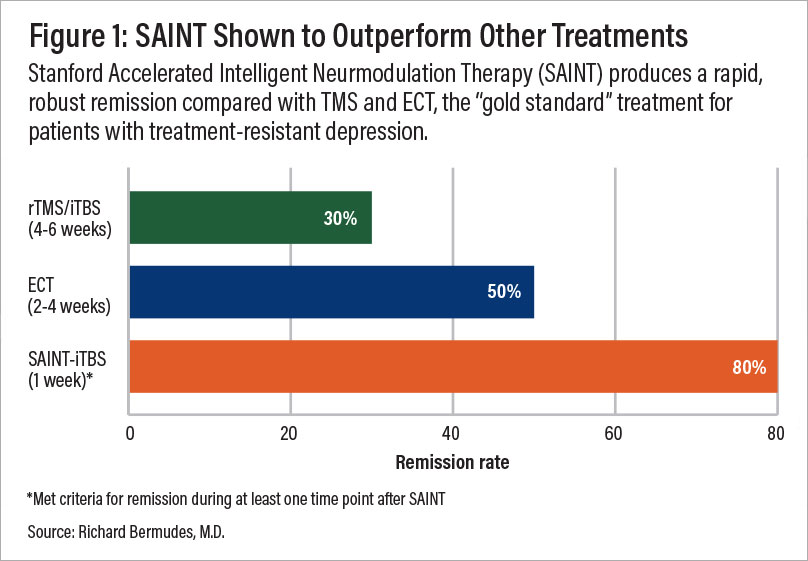
A comparison of remission rates for rTMS/iTBS, electroconvulsive therapy (ECT), and SAINT-iTBS.
If symptoms return, SAINT can be repeated. In fact, 9 out of 10 patients who relapsed after their first round of SAINT went into remission again after a second round—showing that retreatment can be very effective.
Is Theta Burst Stimulation Safe? What Are the Potential Side Effects?
Intermittent TBS is characterised by mild, short-term side effects and high tolerability. The most common side effects include headaches and scalp discomfort, which, if needed, can be treated with over-the-counter painkillers. A few patients report hearing problems or dizziness after their TMS session, but this is only temporary.
The most serious adverse event that may result from these treatments is seizures, but the risk is minimal. The risk was slightly higher in the early days of TMS, but additional safety features have been implemented in the procedure, significantly reducing patient risk.
For iTBS, current estimates suggest that fewer than 3 patients experience a seizure per 100,000 sessions. Seizures are more likely in patients with a history of seizures or suffering from neuropsychiatric diseases, including epilepsy, multiple sclerosis, traumatic brain injury, and Alzheimer’s disease.
In addition, iTBS is a noninvasive procedure that does not require anesthesia or a lengthy recovery period. Patients can return to their normal activities immediately after their treatment, making TMS sessions easy to incorporate into daily routines without blocking off large portions of their schedules.
In comparison, other treatments for depression are much more likely to trigger serious side effects, including memory loss and confusion after electroconvulsive therapy (ECT), or sleep disturbances and feeling agitated with antidepressant medication.
How Long Does Theta Burst Stimulation Take to Work?
There is great variation in how patients respond to iTBS. Some experience improvements within the first few days of treatment, while others don’t see noticeable changes until weeks later. It’s important to note that not feeling a change as quickly as another person is not an indicator that the treatment isn’t effective or that the patient is more likely to relapse.
In contrast, antidepressant medications take 6 to 8 weeks to show results, and patients often need to try multiple medications before finding an effective one.
How Much Does Theta Burst Stimulation Cost? Is It Covered by Insurance?
In general terms, iTBS and the original TMS are approximately the same price, typically ranging from $6,000 to $15,000, but could be higher in clinics offering specialized technology or additional treatments alongside TMS.
A cost analysis revealed that iTBS has the potential to be a cheaper option for patients as it becomes more widespread. This is mostly because shorter sessions in iTBS treatments are associated with lower costs for staff and equipment.
At the moment, iTBS is not covered by insurance companies. In practical terms, this means iTBS is only possible for patients who can cover the costs themselves.
Is It Easy to Find a Clinic Offering Theta Burst Stimulation?
In recent years, the number of clinics offering rTMS therapy in the United States has increased significantly. Finding a local clinic offering the rTMS protocol is now relatively easy.
In contrast, clinics offering iTBS are less common because they require newer equipment. For this reason, patients may need to travel to access iTBS treatment. This can add to the overall cost and may be a barrier to care for those with limited mobility or resources.
Receiving Theta Burst TMS Treatment at Cognitive FX
Our clinic in Provo, Utah, provides an alternative to SAINT™ TMS that offers the same precision of personalized treatment targeting, combined with FDA-approved theta burst stimulation at a significantly lower cost. This approach delivers the same core elements that make SAINT so revolutionary.
The only difference between our treatment and SAINT™ (a trademark licensed to Stanford Medical) is our targeting method. Our target locations are determined by fMRI and our prescribing neuroscientist and physician, rather than their proprietary software.
This accelerated protocol of iTBS is:
-
Safe: Widely tolerated and associated with mild, short-lasting side effects.
-
Precise: fMRI ensures that the treatment target area is precisely located for each patient, accounting for variations in head size and shape. Neuronavigation ensures the magnetic coil is placed over that exact spot for every treatment session.
-
Fast: Treatment courses are reduced to a single week, making it easier to complete alongside life and work commitments (compared to 4 to 6 weeks of standard TMS and accelerated TMS protocols).
-
Effective: Precision coil placement combined with theta burst stimulation produces the best TMS treatment results to date.
To improve patient outcomes, we also include cognitive behavioral therapy (CBT) as a part of our treatment. When combined with the traditional method of TMS (rTMS), CBT improved response and remission rates by ~8% and ~19%, respectively. Additionally, CBT is likely to produce sustained improvement over time once treatment has concluded.
Our brain stimulation treatment is ideal for most patients with treatment-resistant depression. However, we do not treat patients under the age of 18 or over 65. Additionally, as a safety measure, we do not treat patients who have a history of seizures or who are currently actively suicidal and in need of crisis care.
Click here to learn more about receiving accelerated fMRI TMS therapy at Cognitive FX.
Cited Research
